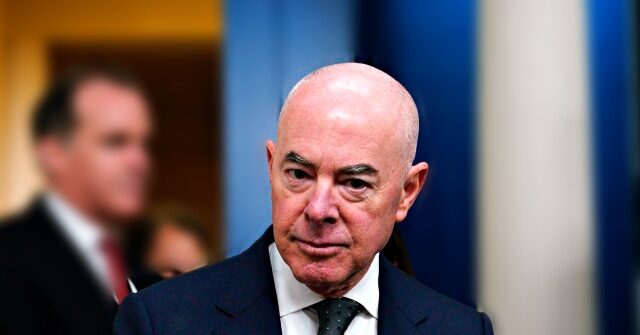In the waning days of President Joe Biden’s administration, a significant policy shift has emerged from the Department of Homeland Security (DHS), led by Secretary Alejandro Mayorkas. The new rule, announced by Mayorkas, allows millions of migrants—many of whom have recently arrived and been released into the U.S.—to extend their work permits for up to 540 days when seeking a renewal. Previously, the extension period had been limited to 180 days. This initiative, positioned to take effect on January 13, 2025, responds directly to the longstanding requests of Democratic mayors who have argued for more lenient employment authorization norms for migrants. By facilitating easier access to work permits, the administration hopes to bolster the job market and economy by helping businesses find suitable workers.
Mayorkas clarified that the purpose behind this policy change is to alleviate bureaucratic hurdles faced by employers, ensuring that eligible migrant workers can remain employed without unnecessary interruptions. He emphasized, “Increasing the automatic extension period…will help eliminate red tape that burdens employers,” further arguing that it would empower hundreds of thousands of individuals to contribute positively to the economy during a critical time. Ur Jaddou, director of the United States Citizenship and Immigration Services (USCIS), echoed this sentiment, asserting that the rule would help U.S. employers retain their workforce and mitigate potential disruptions in employment due to delays in permit renewals.
However, this policy announcement has not gone unchallenged. Immigration Subcommittee Chairman Tom McClintock (R-CA) raised concerns at a recent hearing, criticizing the decision to extend the temporary work permit period amidst rising inflation and stagnant wages for many Americans. He pointed out that, under the current administration, the increase in foreign workers has coincided with a troubling trend where native-born Americans are exiting the workforce. Specifically, he highlighted that over a million foreign-born workers have entered the job market, while nearly 800,000 native-born workers have dropped out, intensifying the difficulties faced by American families striving to make ends meet.
Supporting these claims, a study by the Pew Research Center revealed that as of 2022, more than 30 million legal immigrants and undocumented migrants were participating in the American workforce. This figure marks a notable 20 percent increase over a span of 15 years. In stark contrast, the participation of native-born Americans in the workforce has seen only a minor increase of less than 10 percent during the same period. This disparity raises critical questions about the broader implications of immigration policy and labor market dynamics, particularly how they affect wage growth and job availability for American citizens.
Critics of the Biden administration’s policy contend that facilitating an easier pathway for migrant work permits is emblematic of a larger trend that seems to prioritize foreign labor over native workers. With rising costs of living and persistent inflation eroding purchasing power, there is a growing sentiment among many Americans that the government is failing to protect their economic interests. The debate surrounding the new work permit rules reflects a broader conversation about immigration, labor, and economic policy in the United States, wherein competing interests must negotiate the balance between welcoming migrants and ensuring job security for native-born individuals.
In conclusion, as the Biden administration navigates these complex issues in its final weeks, the announcement concerning the extension of work permits for migrants encapsulates the tensions between fostering economic growth through immigration and the pressing concerns of domestic job security. The discussion ignited by this rule underscores the need for a more nuanced approach to immigration that considers the impacts on all workers in America. As various stakeholders—including government officials, business leaders, and the public—engage in this pivotal debate, the outcomes will likely shape the contours of U.S. labor policy for years to come.

